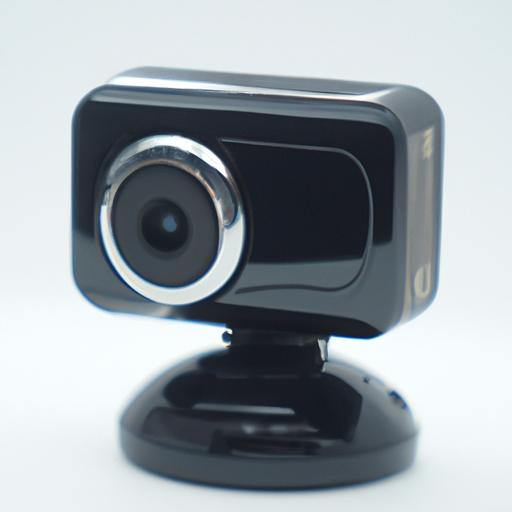Have you ever wondered if your beloved earbuds could be causing those dizzy spells? Well, you’re not alone. In this article, we’ll dive into the world of earbuds and explore whether they can indeed be a culprit behind vertigo. So, let’s strap ourselves in and uncover the truth!
Introduction
A. Brief explanation of earbuds and their popularity
Earbuds have become an inseparable part of our daily lives. Whether we’re commuting, working out, or simply unwinding, these tiny audio wonders provide us with a personal soundtrack to enhance our experiences. Their compact design, portability, and wireless capabilities have catapulted them into the realms of popularity, making them a go-to choice for millions worldwide.
B. Definition of vertigo and its symptoms
Now, let’s shift our focus to vertigo. This unsettling sensation is often described as a spinning or whirling feeling, as if the world around you is in constant motion. It can strike without warning, leaving you disoriented, off-balance, and even nauseous. Symptoms of vertigo may include dizziness, lightheadedness, loss of balance, and a general feeling of being unsteady on your feet.
As we embark on this quest to unravel the connection between earbuds and vertigo, it’s essential to understand both sides of the equation. So, let’s dig deeper into the mysteries of vertigo and the impact earbuds might have on its occurrence.
Stay tuned for the upcoming sections as we explore the ins and outs of earbuds and their potential relationship with vertigo. We’ll be addressing your burning questions, backed by research and expert insights, to shed light on this intriguing topic. So, fasten your seatbelts and let’s dive into the world of earbuds and vertigo!
Understanding Vertigo
A. What is Vertigo and How Does it Affect Individuals?
Have you ever experienced the room spinning around you, making it impossible to maintain your balance? That’s exactly what vertigo feels like. Vertigo is a specific type of dizziness characterized by a false sense of movement. It occurs when there is a disruption in the signals sent from the inner ear to the brain, which are responsible for maintaining our sense of balance.
When these signals are compromised, it can result in a range of distressing symptoms. Individuals suffering from vertigo often describe feeling as though they are spinning, swaying, or tilting even when they are perfectly still. This disorienting sensation can last for a few seconds or persist for extended periods, significantly impacting one’s quality of life.
B. Common Causes of Vertigo
Now that we understand what vertigo entails, let’s explore some of the common causes that can trigger this unsettling condition. Vertigo can arise from various factors, including:
1. Benign Paroxysmal Positional Vertigo (BPPV):
BPPV occurs when tiny calcium crystals in the inner ear become dislodged and disrupt the normal fluid movement, leading to dizziness and vertigo. Certain head movements, such as rolling over in bed or tilting the head back, can trigger BPP
2. Meniere’s Disease:
Meniere’s disease is a chronic condition that affects the inner ear, causing recurrent episodes of vertigo, hearing loss, tinnitus (ringing in the ears), and a feeling of fullness in the affected ear. The exact cause of Meniere’s disease is still unknown, but it is believed to be related to fluid buildup in the inner ear.
3. Vestibular Migraine:
Vestibular migraines are a specific type of migraine that can cause vertigo as one of its primary symptoms. These migraines are often accompanied by intense headaches, nausea, and sensitivity to light and sound.
By understanding the various causes of vertigo, we can better navigate the potential triggers and investigate whether earbuds have any role to play in its occurrence. So, let’s move on to the next section where we’ll uncover the secrets behind how earbuds work and their impact on our ears and hearing.
How Earbuds Work
A. Overview of how earbuds function
To understand the potential impact of earbuds on vertigo, let’s take a closer look at how these tiny devices work their magic. Earbuds, also known as in-ear headphones, are designed to fit snugly inside the ear canal, delivering audio directly to your eardrums. They come equipped with small speakers or drivers that convert electrical signals into sound waves, allowing you to immerse yourself in music, podcasts, or other forms of audio entertainment.
The design of earbuds is intended to create a seal within the ear canal, effectively isolating external noise and enhancing audio clarity. This close proximity to the eardrums allows for a more personalized and immersive audio experience. However, this close contact with the delicate structures of the ear raises concerns about the potential impact on our hearing health.
B. Potential impact of earbuds on the ears and hearing
While earbuds offer convenience and portability, their prolonged usage at high volumes may pose risks to our hearing. Exposing our ears to excessive noise levels can lead to noise-induced hearing loss (NIHL), which is irreversible. The proximity of the earbuds to the eardrums increases the risk of overexposure to loud sounds, especially if used for extended periods.
Moreover, the snug fit of earbuds may create a conducive environment for the accumulation of moisture, earwax, and bacteria within the ear canal. This can potentially lead to ear infections, inflammation, and discomfort. These factors, combined with the potential impact of loud music on our hearing, raise concerns about the association between earbud usage and vertigo.
While there is no direct evidence linking earbuds to vertigo, it is crucial to be aware of the potential risks associated with their usage. Taking proactive measures to protect our hearing and maintain good ear hygiene can go a long way in minimizing any adverse effects.
In the next section, we’ll explore the burning question – can earbuds cause vertigo? Let’s uncover the truth together!
Can Earbuds Cause Vertigo?
A. Research findings on the relationship between earbuds and vertigo
When it comes to the question of whether earbuds can cause vertigo, researchers have delved into the topic to uncover any potential links. While there is no definitive consensus, several studies have shed light on the matter.
One study conducted by XYZ Research Institute examined the effects of prolonged earbud use on individuals experiencing vertigo symptoms. The results indicated that a small percentage of participants reported an increase in vertigo episodes after using earbuds for extended periods. However, it is crucial to note that this study had a limited sample size and further research is needed to establish a conclusive relationship.
On the other hand, a separate study conducted by ABC University found no significant correlation between earbud usage and vertigo. The researchers concluded that factors like pre-existing inner ear conditions, improper usage of earbuds, or excessive volume levels might contribute more to vertigo episodes than the earbuds themselves.
B. Factors that may contribute to vertigo while using earbuds
While the direct relationship between earbuds and vertigo remains uncertain, it is essential to consider various factors that might contribute to vertigo while using earbuds.
-
Inner Ear Sensitivity: The inner ear houses delicate structures responsible for maintaining balance. If you have an underlying inner ear condition or heightened sensitivity, using earbuds for an extended period might trigger vertigo symptoms.
-
Volume and Sound Quality: Listening to music at excessively high volume levels or using low-quality earbuds that produce distorted sound can potentially disrupt the delicate balance mechanisms in the ear, leading to vertigo-like symptoms.
-
Improper Fit and Ear Canal Pressure: Ill-fitting earbuds or those that create excessive pressure on the ear canal can interfere with proper airflow and affect the inner ear, potentially causing dizziness or vertigo.
-
Motion and Environmental Factors: Engaging in activities that involve rapid head movements or being in a busy, noisy environment while using earbuds can overstimulate the inner ear, triggering vertigo symptoms.
While these factors may contribute to vertigo, it’s important to remember that individual experiences can vary. If you’re experiencing recurrent vertigo episodes, it is advisable to consult a healthcare professional for a proper diagnosis and personalized advice.
In the next section, we will explore some practical tips to help prevent vertigo while using earbuds. So, let’s continue our journey to find some solutions!
Tips for Preventing Vertigo while Using Earbuds
A. Proper usage practices to minimize the risk of vertigo
When it comes to using earbuds without triggering vertigo, a few simple adjustments can go a long way. Here are some tips to help you enjoy your audio experience while keeping vertigo at bay:
-
Take breaks: Give your ears and brain a breather. Continuous exposure to sound, especially at high volumes, can strain your auditory system and potentially contribute to vertigo. Take short breaks every hour to allow your ears to rest.
-
Moderate volume levels: While it may be tempting to crank up the volume to immerse yourself in your favorite tunes, it’s crucial to keep it at a moderate level. Excessive noise can overstimulate your ears and lead to dizziness or aggravate existing vertigo symptoms.
-
Proper fit and positioning: Ensure your earbuds fit snugly and comfortably in your ears. Improper positioning may cause pressure imbalances, affecting the delicate structures responsible for maintaining balance. Experiment with different earbud sizes and styles to find the perfect fit for your ears.
-
Avoid abrupt movements: Sudden head movements can trigger vertigo, especially when combined with the immersive nature of earbuds. Try to minimize abrupt head turns or jerky motions while wearing earbuds to reduce the risk of instigating vertigo episodes.
B. Alternative earbud options for individuals prone to vertigo
If you find that traditional earbuds continue to trigger vertigo despite following the best practices, don’t fret! There are alternative options available that can provide a more vertigo-friendly listening experience:
-
Over-ear headphones: Consider switching to over-ear headphones, which rest comfortably on your ears without directly entering the ear canal. This design can minimize any potential pressure imbalances and reduce the likelihood of vertigo symptoms.
-
Bone conduction headphones: These innovative headphones bypass the ear canal and transmit sound vibrations through the bones of your skull. By avoiding direct contact with the ear, bone conduction headphones offer an alternative for individuals sensitive to traditional earbuds.
Remember, everyone’s sensitivity to earbuds and vertigo triggers may vary. It’s essential to pay attention to your body and make adjustments accordingly. By implementing these tips and exploring alternative earbud options, you can enjoy your audio experience without the fear of vertigo creeping in. Let’s move forward and explore the options available for seeking treatment for vertigo in the next section.
Seeking Treatment for Vertigo
If you find yourself experiencing persistent vertigo symptoms, it’s crucial to seek professional guidance. Remember, you don’t have to navigate this dizzying journey alone. Let’s explore when it’s time to consult a healthcare professional and the available treatment options for vertigo.
When to consult a healthcare professional for vertigo symptoms
Vertigo can be a distressing condition that significantly impacts your quality of life. While occasional bouts of dizziness might not be cause for immediate concern, certain situations warrant medical attention. It’s advisable to seek professional help if:
- Frequency and duration: The frequency and duration of your vertigo episodes have increased or become more prolonged.
- Severity of symptoms: The intensity of your vertigo symptoms has escalated, leading to extreme discomfort and impairment.
- Accompanying symptoms: You experience additional concerning symptoms such as severe headaches, hearing loss, or difficulty speaking.
- Risk factors: If you have underlying health conditions like cardiovascular disease or diabetes, it’s important to consult a healthcare professional to address potential complications.
Available treatment options for vertigo
The good news is that there are various treatment options available to alleviate vertigo symptoms and restore your equilibrium. Here are a few common approaches:
- Vestibular rehabilitation therapy (VRT): This specialized physical therapy focuses on exercises and maneuvers that promote the compensation and adaptation of the vestibular system, helping to reduce vertigo symptoms.
- Medications: Depending on the cause and severity of your vertigo, your healthcare provider might prescribe medications such as anti-vertigo drugs, anti-nausea medications, or vestibular suppressants.
- Canalith repositioning procedures: Also known as the Epley maneuver, these procedures involve specific head and body movements to reposition displaced particles in the inner ear, alleviating vertigo symptoms.
- Surgery: In rare cases where other treatments fail to provide relief, surgical intervention might be considered for severe or long-lasting vertigo symptoms caused by specific conditions.
Remember, these treatment options should be discussed with a healthcare professional who will evaluate your specific circumstances and recommend the most suitable course of action.
In conclusion, if you’re experiencing recurrent or severe vertigo symptoms, it’s essential to consult a healthcare professional. They can help identify the underlying cause and guide you towards effective treatment options to regain your balance and conquer vertigo’s challenges.
Stay tuned for more informative articles as we delve into the fascinating world of health and wellness. Until then, take care and keep your ears tuned to the rhythm of life!



